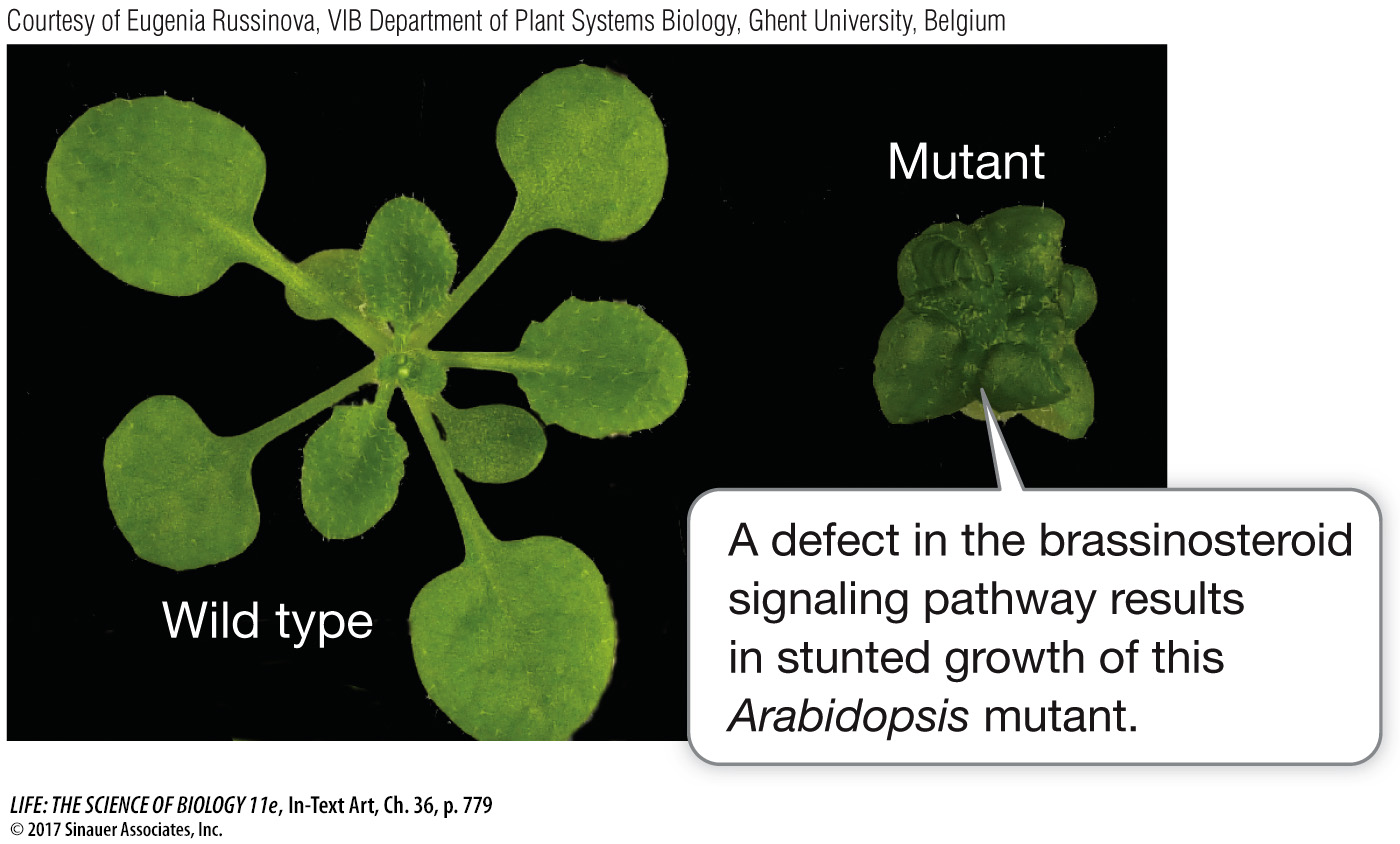Brassinosteroids are plant steroid hormones
In animals, steroid hormones such as cortisol and estrogen are formed from cholesterol (see Figure 40.2B). Initially, biologists isolated a plant steroid hormone from the pollen of rape, a member of the Brassicaceae (mustard family). When applied to various plant tissues, this brassinosteroid (see Table 36.2) stimulated cell elongation, pollen tube elongation, and vascular tissue differentiation, but it inhibited root elongation. Since then, dozens of chemically related, growth-
Mutant plants that either do not make brassinosteroids or have defects in brassinosteroid reception and signal transduction are usually dwarf, infertile, and slow to develop. These effects can be reversed by adding small amounts of brassinosteroids, indicating that brassinosteroids are true hormones. These hormones have diverse effects, which vary among plants. Brassinosteroids can:
promote xylem differentiation
promote growth of pollen tubes during reproduction
promote seed germination
promote apical dominance and leaf senescence
enhance cell elongation and cell division in shoots

The signaling pathway for these plant steroids differs sharply from those for steroid hormones in animals. In animals, steroids diffuse through the cell membrane and bind to receptors in the cytoplasm. In contrast, the receptor for brassinosteroids is an integral protein in the cell membrane.